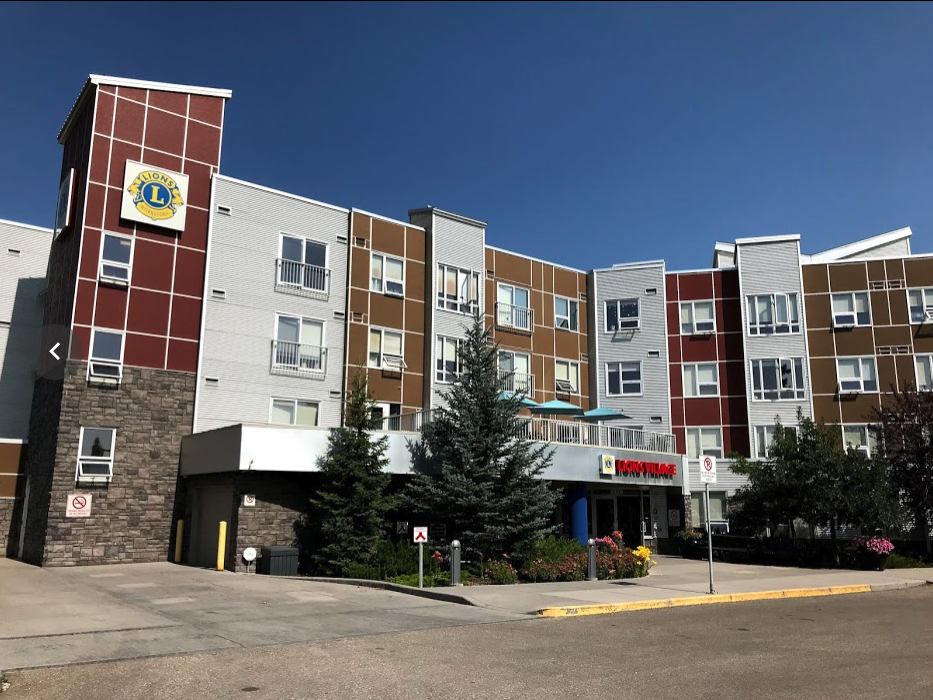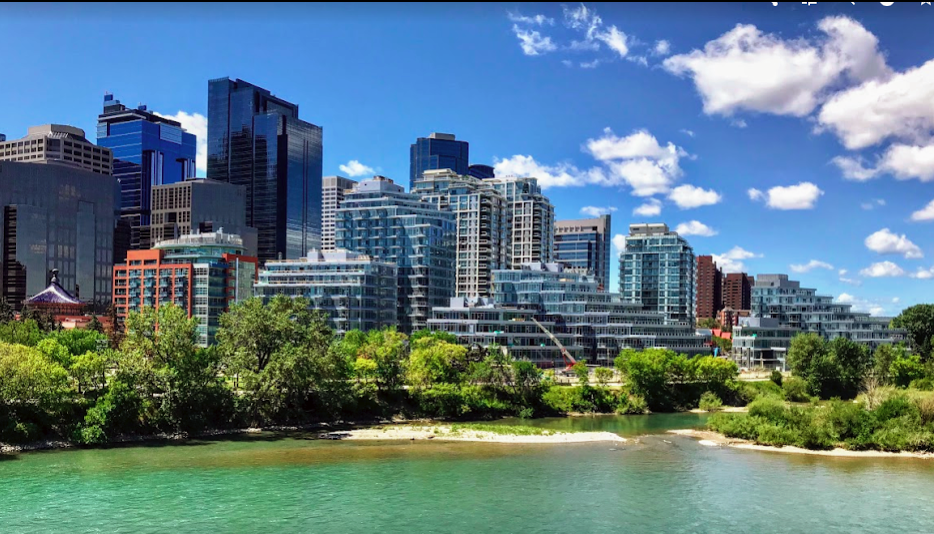It takes a lot of different villages to create a healthy city.
A well-known African proverb, “It takes a village to raise a child” testifies to fact it takes a diversity of people interacting and supporting a child, to enable them to mature into healthy, self-assured, caring, constructive adults. Reflecting a lot about city building (as I am prone to do), it occurred to me it also takes a lot of different villages or communities to create a healthy city.
The Child Development Centre is located on the University of Calgary campus and is home to numerous not-for-profit organizations helping children and their families, like the Sinneave Family’s 17,000 sf Ability Hub for families dealing with Autism.
Calgary is also home to numerous affordable seniors facilities like this one located next to the Bow River in West Hillhurst.
Calgary is also home to an upscale urban resort living village aka Westman Village.
Calgary is home to several man-made lake communities.
Calgary’s Central Library attracts over one million visitors a year from across the city. It has been described as the city’s “living room.”
200+ Neighbourhoods
One aspect of a healthy city is that it provides a variety of types of physical communities, ie. with different densities, amenities and housing types, to support different lifestyles. What makes Calgary one of the most livable cities in the world is the diversity of our 200+ neighbourhoods. Indeed, Calgary is like a family of villages.
For those wanting an authentic urban experience in a high-density, high-rise, walkable community, Calgary offers the Beltline, East Village and West Downtown. For those interested in a mid-rise community with a traditional main street, there is Bridgeland, Hillhurst/Sunnyside, Inglewood and Marda Loop.
Calgary also has numerous inner-city infill communities like Altadore, Mount Pleasant and Parkdale offer single family, duplex, townhouse and low-rise apartment living in new and old homes. These communities offer easy access to our city centre amenities, while having their own schools, parks, playgrounds and other recreational facilities.
For those wanting to live near water, Calgary offers several lake community options including Lake Bonavista (Canada’s first lake community established in 1967). Today, Calgary is home to several – Arbour Lake, Auburn Bay, Lake Chaparral, Lake Sundance, Midnapore, Mackenzie Lake and Coral Springs. And, for those wanting a bit more space, many lake communities can be found outside the city, the biggest being Chestermere. Or, you can live next to or near the river in communities like Bowness, Montgomery, Eau Claire or Roxboro.
For those who love golf, Calgary has several golf course communities – Willow Park, Douglasdale, Valley Ridge and Hamptons. Just outside the city there is Heritage Pointe, Harmony, Redwood, Priddis and Pinebrook to name a few.
Is home to several riverside urban villages - Eau Claire, East Village and Mission..
Calgary is home to high-rise communities like the Beltline.
Or you can live on a street of early 20th century cottage houses.
Others prefer to live next to an LRT station with easy access to a shopping mall.
Old vs New
Calgary also offers dozens of established communities or older suburbs built from the 1960s to 1990s with predominantly single-family homes and big-box shopping centres (what today’s urbanists love to hate, but the public seem to like). Many Calgarians are happy with their quiet streets (all with similar names), double attached garage in the front (or in the alley) and driving to the mall, recreation centre, parks, playgrounds and pathways nearby. Not everyone wants to live in the hustle and bustle of a crowded urban streets, parks and plazas. For many, having their own backyard is their private oasis is of critical importance.
For those looking for even more privacy and a bit more distance from their neighbours, numerous acreage communities can be found just beyond the city limits, yet you are just minutes from the city’s amenities.
At the city’s edge, new master planned communities are being created that are a hybrid between the old, residential-dominated communities and walkable, mixed-use communities. They are designed with everyday shopping and recreational needs within the community in mind. Think SETON and Livingston. Attractive new multi-family, mixed-use walkable communities in existing communities or established neighbourhoods are being created by infilling them with urban villages like Currie, Quarry Park, Trinity Hills and University District and West District.
Calgary’s satellite cities (Airdrie, Bragg Creek, Cochrane, Chestermere, High River, Langdon, Okotoks and Strathmore) offer small town living, with easy access to big city amenities. Strathmore might in fact be Calgary’s most complete community with its own hospital, 10 schools, four grocery stores, several recreational faculties, a golf course and main street all just five minutes away.
Calgary is also home to several housing cooperatives scattered across the city. Co-op living not only provides more affordable housing (especially for families), but also appeals preferring a more communal, neighbourly lifestyle.
Calgary is surrounded by several small towns each with their own main street like this one in Strathmore, which also has schools, parks, recreation facilities and all of your everyday amenities just a 5 minute drive away.
Calgary is home to over 5,000 parks - big and small - that often define the character of the community.
Societal Villages
In addition to the diversity of village typology, a healthy city must also have a spectrum of societal villages.
Our mosques, temples, synagogues, cathedrals and churches are villages that allow people of with the same beliefs to worship together. Did you know Calgary’s Centre Street Church has an average total weekly attendance of 5,975 at its five campuses.
The Calgary Drop-in Centre, the largest homeless shelter in North America, is a village for the homeless. Trinity Place Foundation’s King Tower and Murdoch Manor in East Village are villages for low income, high-need seniors. Calgary’s newest village (and first of its kind in Canada) is ATCO Village at Radisson Heights - 15 small affordable homes for veterans of the Canadian Armed Forces struggling with homelessness.
And, there’s the Ability Hub at the University of Calgary, which helps individuals on the Autistic spectrum (and their families) with their transition into adulthood. This is just one example of the hundreds of agencies in Calgary that are villages for those with special needs.
Calgary’s mega regional recreation centres are the modern day village square where people of all ages, backgrounds and interests, mix and mingle for a variety of activities and interests. The Olympic Oval and WinSport are villages where Olympic athletes mix with the public-at-large. The Calgary Soccer Centre with its numerous indoor and outdoor fields is a village for Calgary’s growing soccer community. Stampede Park and Spruce Meadows are villages for Calgary’s agricultural, cowboy and equestrian communities.
The Decidedly Jazz Dance Studio brings together hundreds of young Calgarians wanting learn to dance, while Mount Royal Conservatory is a village for 1,000+ Calgarians interested in the pursuit of music. And of course, the Stampede’s Young Canadians and Stampede Show Band are institutions in Calgary.
The Baitun Nur Mosque is just one of hundred of churches and dozens of religions in Calgary.
Calgary is home to old and new churches.
Calgary is home to numerous recreation centres across the city offering activities for all ages.
Calgary is also home to special interest activities from paddle to saddle.
Calgary is home to several post secondary schools offering a spectrum of degrees and diplomas. Each campus is its own village.
Calgary is home to numerous street festivals where citizens of all ages and backgrounds can mix and mingle.
Calgary his home to over 100 dog parks that are busy year-round.
Calgary is home to numerous cultural villages, the newest being Contemporary Calgary - a major public art gallery in the former Telus Science Centre and planetarium building.
Last Word
One of the great things about living in Calgary is you don’t “live” in a city of a million people, but rather in one of the 200 different neighbourhoods of about 10,000 people - each with its own name, character and community association. As well, we all live in our own special interest villages, from food to fitness, from religion to recreation and from caring to creative societies.
Calgary isn’t perfect. No city is - nor will it ever be. Perhaps in 2020 we can spend more time appreciating what you city has, rather than what it doesn’t.
Note: An edited version of this blog was published in the Calgary Herald’s New Condos section on January 11, 2020.
If you like this blog, you will like these links:
Does Calgary have too many neighbourhoods?
Urban Villages: Calgary defeats Nashville
Calgary: Not your parent’s Suburbs!



















